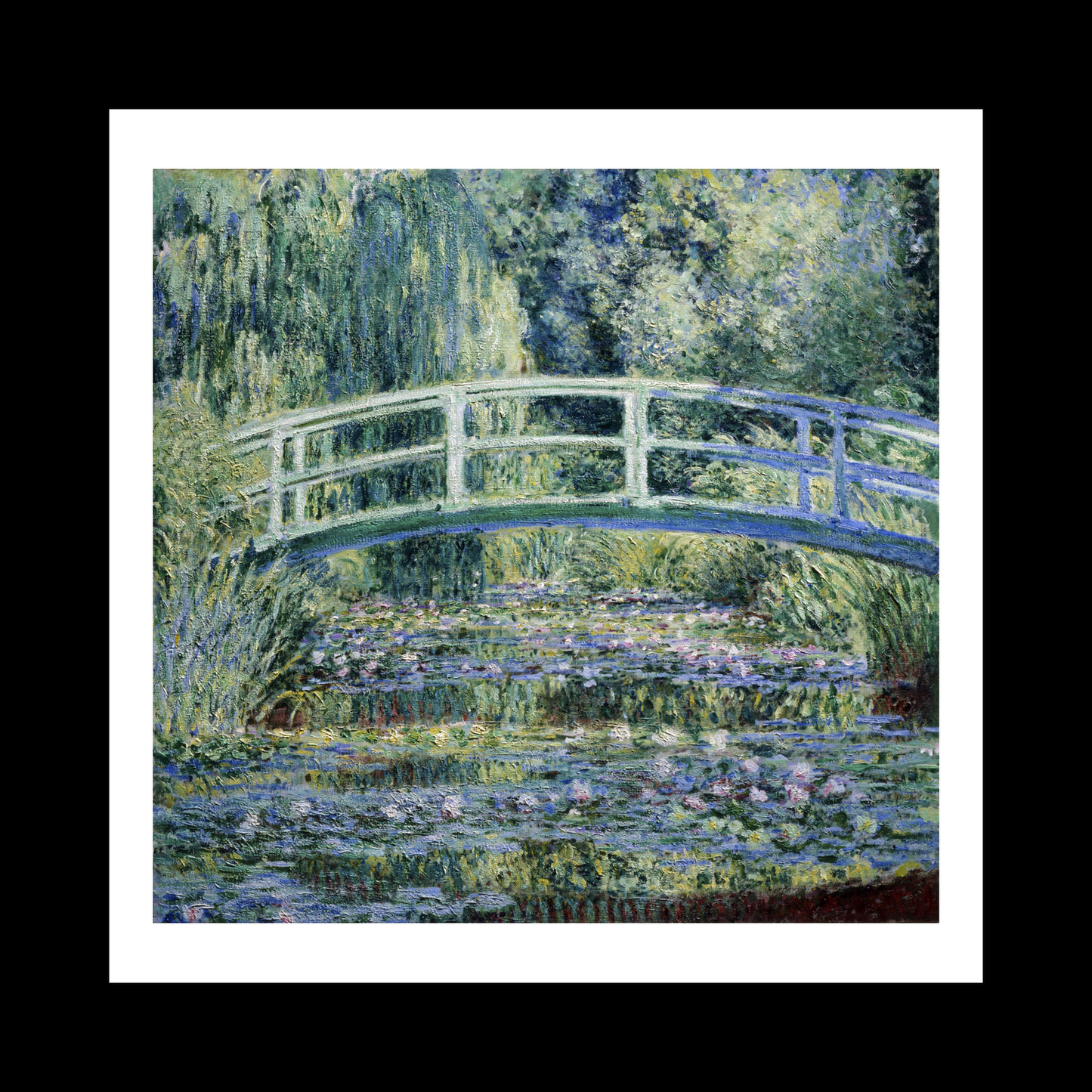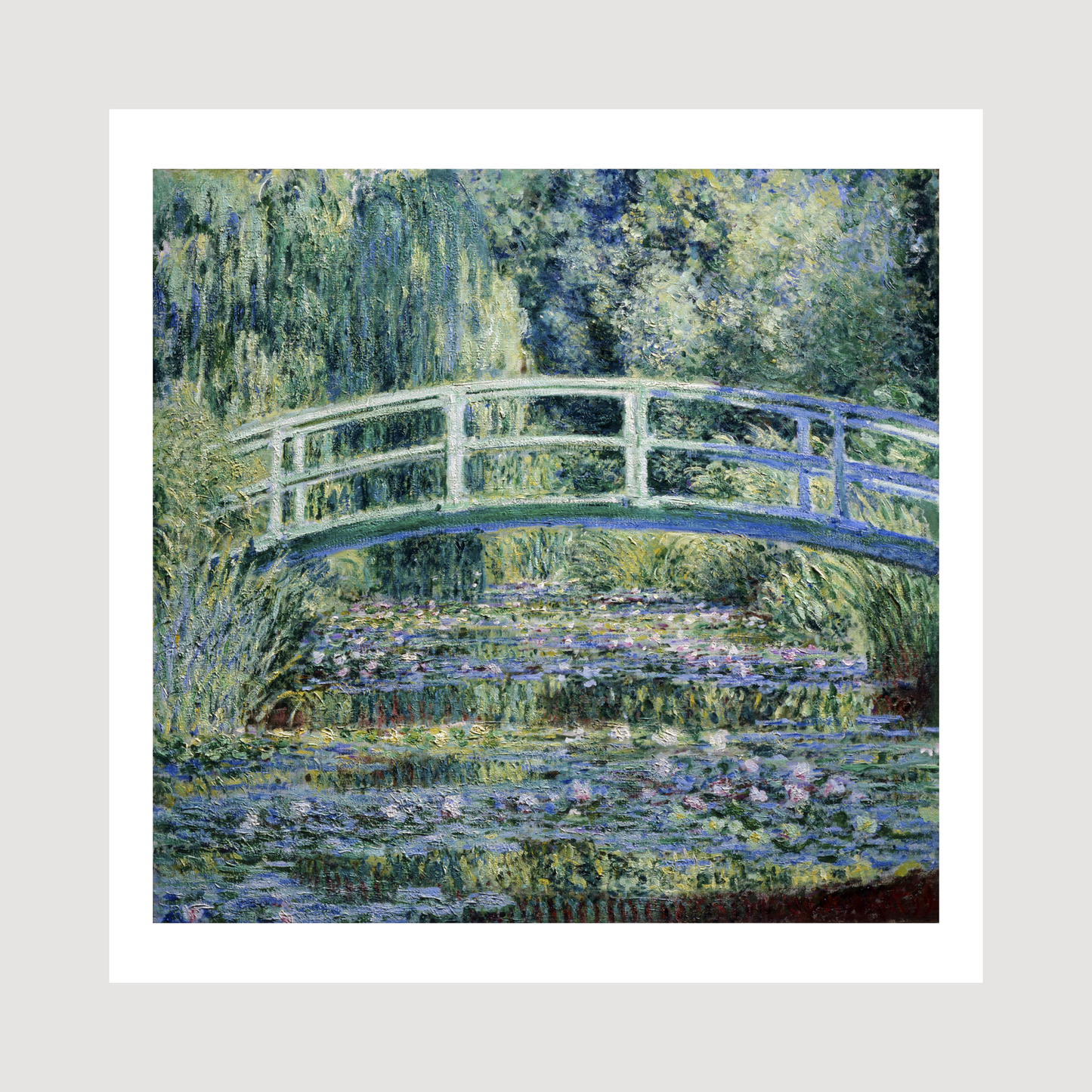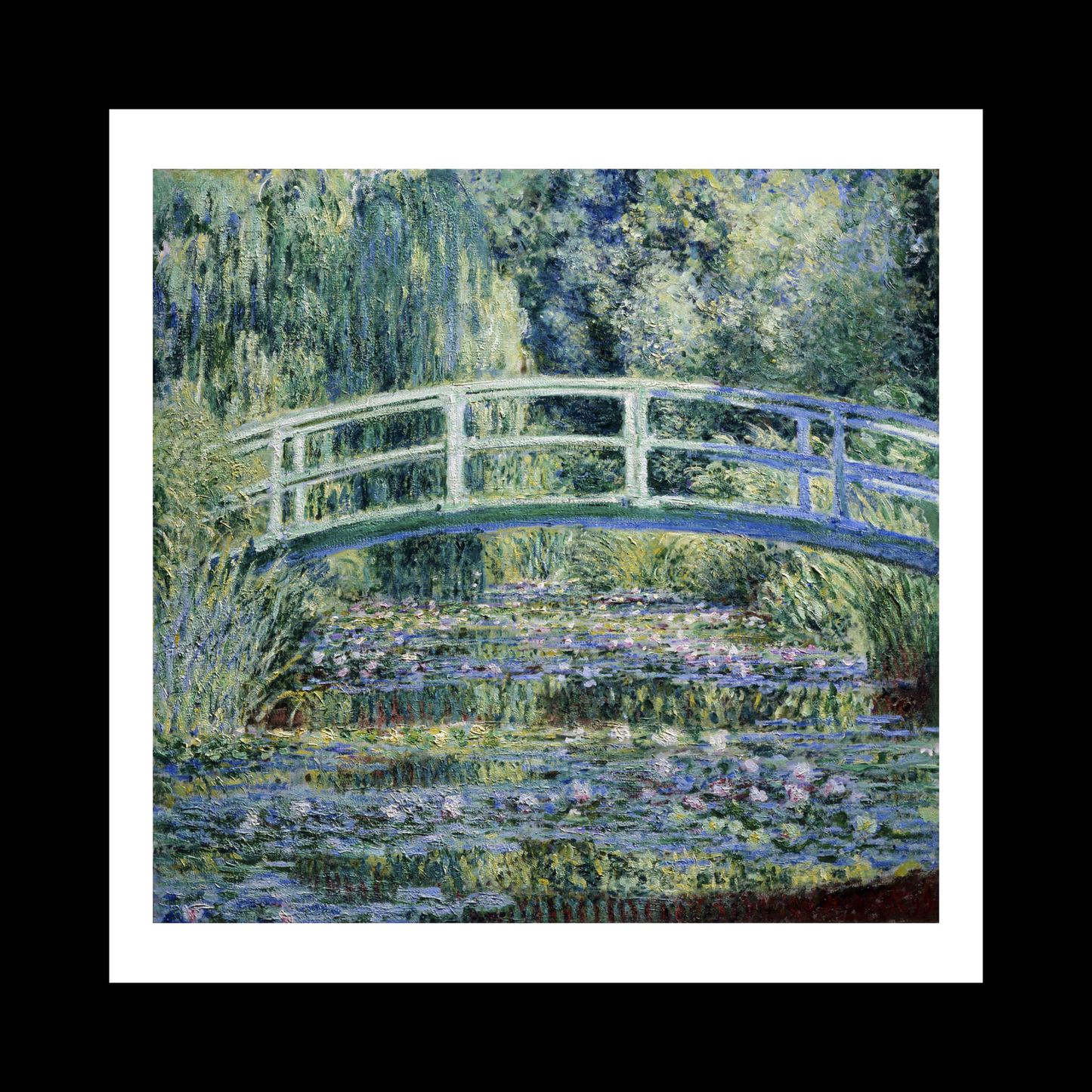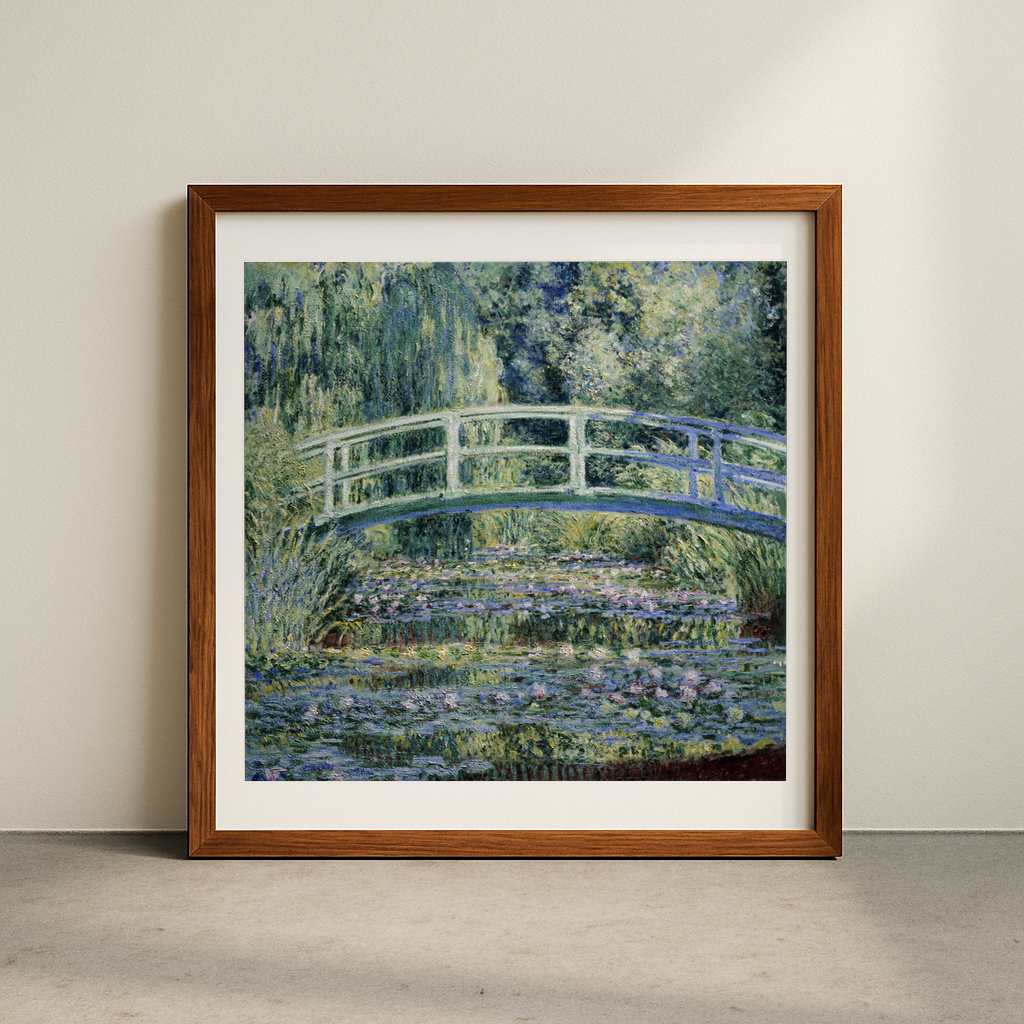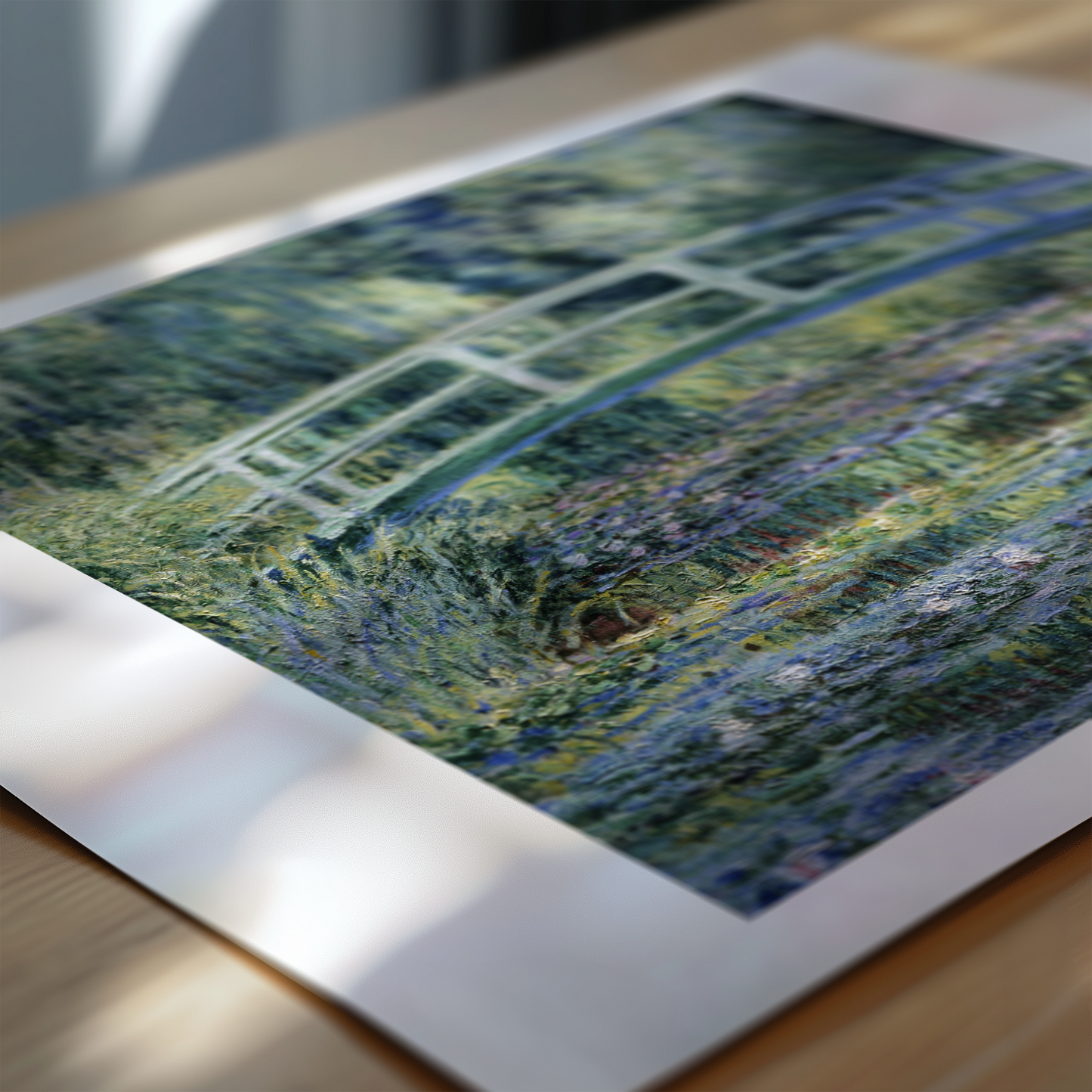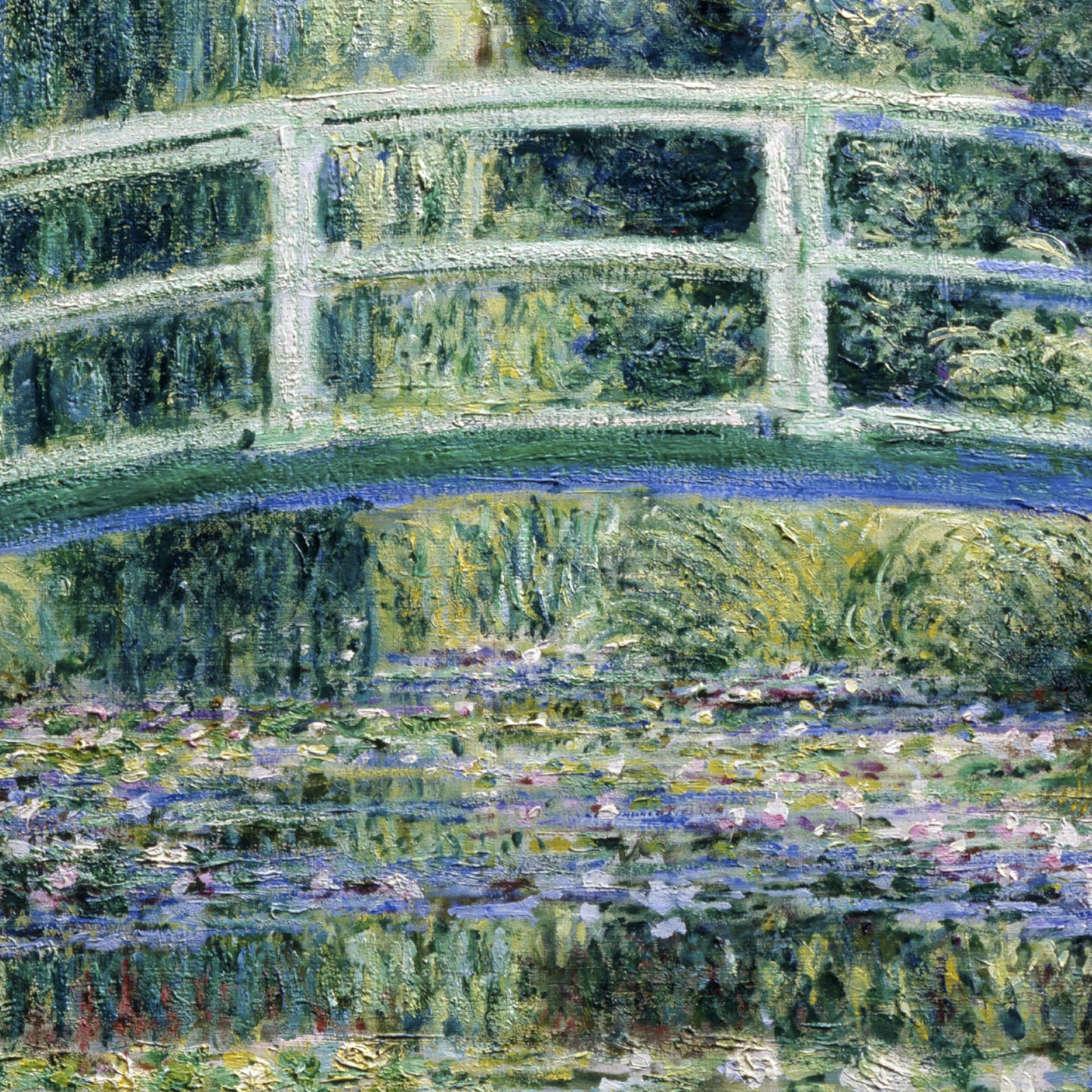1
/
of
6
Water Lilies and Japanese Bridge (1899)
Water Lilies and Japanese Bridge (1899)
Regular price
£12.45 GBP
Regular price
Sale price
£12.45 GBP
Taxes included.
Quantity
Couldn't load pickup availability
Claude Monet's 'Water Lilies and Japanese Bridge' (1899) captures the enchanting harmony of his beloved garden in Giverny, where he spent nearly 30 years cultivating and painting his horticultural paradise. The curved Japanese bridge, painted in a rich green hue, arches gracefully over the water lily pond, while vibrant flowers and trailing wisteria create a lush frame. The composition exemplifies Monet's mastery of Impressionist techniques, with loose brushstrokes and a subtle interplay of light and shadow reflecting on the water's surface.
This painting marks a pivotal moment in Monet's artistic journey, as it combines his fascination with Japanese art and his growing interest in creating immersive natural environments. The Japanese bridge, which he had specially constructed in his garden, represents the artist's appreciation for Eastern aesthetics and his desire to blend different cultural influences. The water lilies, which would later become his primary subject matter, are already beginning to command attention in this work, floating dreamily on the pond's surface.
The artwork showcases Monet's revolutionary approach to colour and perspective. Rather than adhering to traditional methods of depicting depth, he created a more flattened picture plane where reflections and reality merge. The painting's atmospheric quality stems from his technique of applying multiple layers of paint, creating a shimmer that mirrors the constantly changing effects of light on water. This piece marks the beginning of Monet's intensive exploration of his water garden, which would consume his artistic focus for the remaining decades of his life, resulting in his revolutionary large-scale water lily series.
View full details
This painting marks a pivotal moment in Monet's artistic journey, as it combines his fascination with Japanese art and his growing interest in creating immersive natural environments. The Japanese bridge, which he had specially constructed in his garden, represents the artist's appreciation for Eastern aesthetics and his desire to blend different cultural influences. The water lilies, which would later become his primary subject matter, are already beginning to command attention in this work, floating dreamily on the pond's surface.
The artwork showcases Monet's revolutionary approach to colour and perspective. Rather than adhering to traditional methods of depicting depth, he created a more flattened picture plane where reflections and reality merge. The painting's atmospheric quality stems from his technique of applying multiple layers of paint, creating a shimmer that mirrors the constantly changing effects of light on water. This piece marks the beginning of Monet's intensive exploration of his water garden, which would consume his artistic focus for the remaining decades of his life, resulting in his revolutionary large-scale water lily series.
